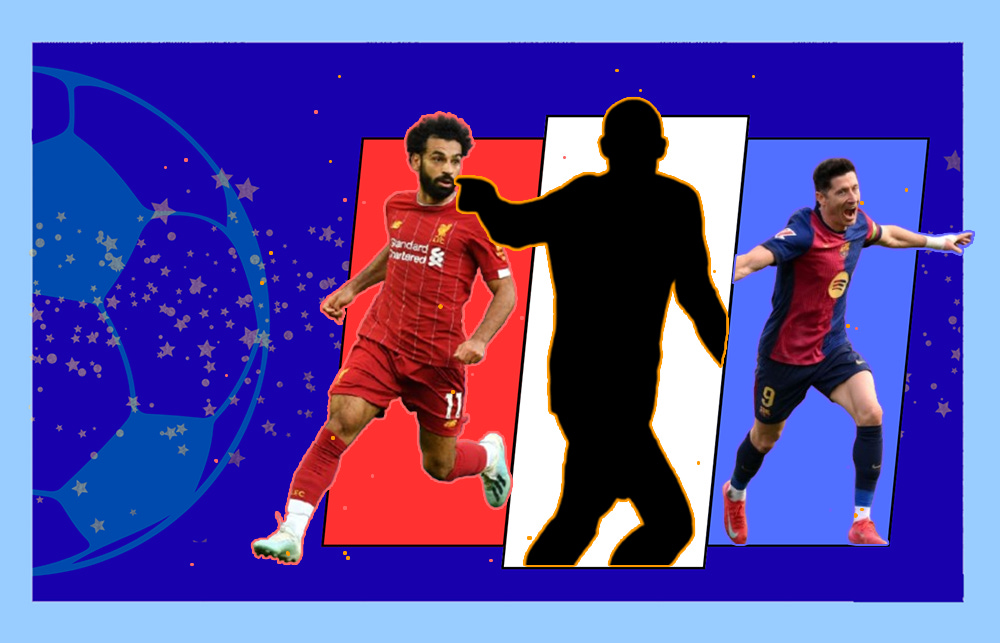Who was the most impactful forward of the 'big names' in 24/25?
We took a look and compared the impact of star forwards of the top UEFA leagues.
Goals, assists, end-of-season statistics and highlights: they tell a story, sure, but all of these numbers are hardly equal.
Watching football regularly, we often run into conversations about player performance. We compare them using simple metrics like goals/assists; with more complicated ones like xG, xA, or even more abstract values; or simply base opinions on who passes our subjective ‘eye tests’.
For the purposes of a qualitative approach, let’s remove the eye tests for now. The other two main approaches (of simple metrics and advanced values) and their sub-metrics of player comparison run into the issue of not all goals, assists and other contributions being equal. Team performance varies, and opponent strength does so too. Comparing a goal against the 18th placed team in a league versus a goal scored against the 2nd has the same impact on face value, when generally you wouldn’t expect that the two teams put up the same quality of play (while of course upsets do happen).
This is why we built a formula to rank some of the currently established star players, taking into account various aspects, such as:
whether a player scored the first goal of the match, the team or neither (as the assumption is that scoring the 3rd goal on a 3-0 match has somewhat less impact than opening the scoreline). We scaled the ‘values’ of scored goals up depending on whether one, or both are true and devaluing it slightly if both are false
minutes played, rewarding impactful substitutes. Because a decisive 15-minute cameo can be more impactful than a full 90-minutes of mediocrity
the position of the opponent team in the league where the match was played (for example, a goal against Slovan Bratislava would take their Champions’ League position, rather than their domestic league), scaling the entire performance
the value of shooting: lots of shots (on or off target) results lots of chances created but a high number may only just be padding for the statistics sheet. Nevertheless, on-pitch threat is not ignored, but wasteful shooting is weighted less. The best forwards are, after all, the ones who are not just threatening to the opponent’s goal, but are clinical too
We wanted make sure we don’t miss any key aspects of the game or where a player is expected to contribute; when determining the data basis of the impact calculations we looked at their comprehensive on-pitch presence. This includes, in order of decreasing weighting significance (for the purposes of the impact index):
Goals and assists, naturally, as these are the most visible metric of a player’s (and especially a forward’s) performance
Creativity: key passes, dribbles. A player who can unlock or stretch defenses can have indirect impact on the match by setting their teammates up for goals, assists or just by drawing the attention of defenders.
Threat: shots, times fouled, and runs offside. Pressuring the opponent can lead to mistakes from their part and might result in direct results, even if only with a lucky deflection.
Defensive contribution: an aggregate of tackles, interceptions, blocks. As tracking back is often expected from forwards today, this also became a real metric of how they impact the structure of their teams.
With these data points, we hold all examined players to the same standard, regardless of the nuances of their individual roles. So Haaland being ‘classic 9’ will directly compete with Mbappe. who’s more of a winger or attacking midfielder. As they play in the same third of the pitch, we think it’s a fair approach to eastablish universal standards in our capacity as neither professional scouts nor fantasy football podcasters.
At this point, I’d also like to highlight that the ‘Impact Index’ is not a ‘scale of 1-to-X’ - it doesn’t have a theoretical highest possible number. Since it’s performance based it’s only limited by whatever a player manages to achieve.
For this inaugural impact index ranking, we looked into the stats of:
Erling Haaland, forward, Manchester City
Robert Lewandowski, forward, Barcelona
Kylian Mbappé, midfielder, Real Madrid
Harry Kane, forward, Bayern Munich
Ousmane Dembelé, midfielder, PSG
and examined their numbers in domestic leagues, domestic cups and the UCL
Without further ado, here’s how their performance measures up against each other:
What do you think? Did it line up with your expectations?
Perhaps the most striking takeaway is how our methodology recalibrates and
re-contextualises the contributions of players, without being overshadowed by pure goal tallies (consider that Salah had 47 goal contributions in the Premier League whereas Dembélé racked up ‘only’ 27 in Ligue 1). After all, the game isn't just about who scores and how much, but also about who shapes the game and how. Begone surface level statistics!
This is essentially just a proof of concept; in the future, we’ll look into more in-depth analysis of performance over time through the impact index, and check & compare some other players as well. So, stay tuned and let us know if there's anyone else we should analyze!




